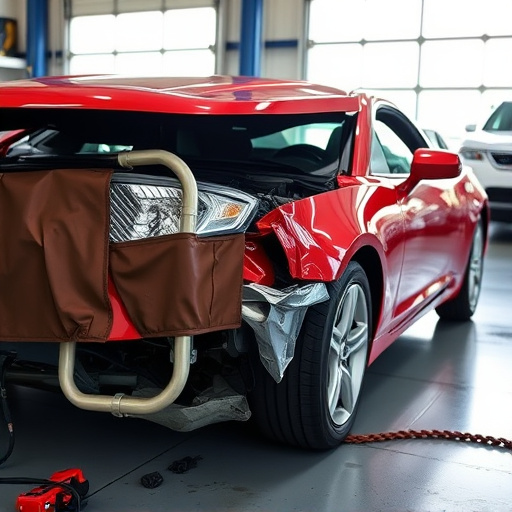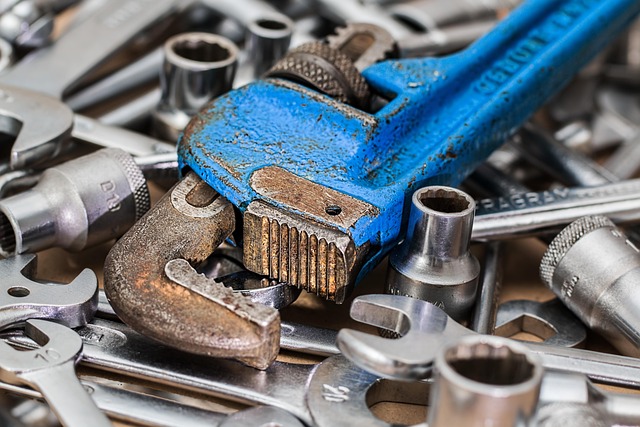Mercedes wheel alignment is crucial for tire wear, handling, and safety. Misalignment leads to uneven tire wear, accelerated brake pad/rotor degradation, and potential suspension damage. Regular checks prevent collision damage and enhance braking performance, prolonging brake life and saving costs. Uneven tire wear indicates misalignment, requiring professional inspections and adjustments at reputable body shops.
Mercedes wheel alignment is a critical component of vehicle maintenance. Poor alignment can lead to uneven brake wear, compromising safety and increasing maintenance costs. This article delves into the basics of Mercedes wheel alignment, explores its link with brake wear, and provides guidance on identifying and addressing alignment issues. By understanding these factors, folks can ensure optimal braking performance and extend the life of their brakes.
- Understanding Mercedes Wheel Alignment Basics
- The Link Between Alignment and Brake Wear
- How to Identify and Address alignment Issues for Better Braking
Understanding Mercedes Wheel Alignment Basics

Mercedes wheel alignment is a critical aspect of vehicle maintenance that involves adjusting the angles of each wheel to ensure they are parallel to one another and perpendicular to the road. This precise configuration is essential for optimal tire wear, handling, and safety. When your Mercedes’ wheels are misaligned, it can lead to uneven tire wear patterns, causing your brakes to wear down more quickly.
Proper alignment keeps your tires in line with the vehicle’s frame, reducing stress on individual components. Over time, poor wheel alignment can result in increased brake pad and rotor wear, as well as potential damage to other parts, such as suspension components. Therefore, regular checks and adjustments are part of recommended car repair services for any Mercedes owner, helping to prevent not only brake issues but also collision damage repair needs stemming from reduced control and handling.
The Link Between Alignment and Brake Wear

Mercedes wheel alignment plays a pivotal role in maintaining optimal brake performance and longevity. Misaligned wheels can cause uneven tire wear, leading to an imbalance that directly impacts how your brakes engage with the road surface. Over time, this can result in faster wear on specific brake components, such as pads and rotors.
Regular checks and adjustments of wheel alignment are crucial for preventing unexpected issues during vehicle collision repair or car bodywork services. Ensuring proper alignment not only enhances safety by improving handling but also reduces the need for frequent auto glass repair due to reduced impact damage from misaligned wheels. By addressing wheel alignment concerns, drivers can extend the lifespan of their brakes and related components, ultimately saving costs on extensive repairs.
How to Identify and Address alignment Issues for Better Braking

Identifying alignment issues in your Mercedes can be crucial for maintaining optimal brake performance and safety. Uneven tire wear is often the first sign—notice if your tires are wearing down unevenly, especially on one side or in a specific pattern. This could indicate misaligned wheels, causing your car to pull to one side during turns. Regularly inspecting your vehicle at a reputable car body shop for visual signs of alignment problems is essential.
Addressing these issues promptly through tire services is recommended. A professional vehicle body repair service can perform a wheel alignment check and make adjustments as needed. By ensuring proper alignment, you can reduce uneven brake wear, enhance braking efficiency, and prolong the life of your brakes. Regular maintenance in this regard not only benefits your safety but also saves costs associated with premature brake replacements.
Mercedes wheel alignment is a critical aspect of vehicle maintenance that directly impacts brake performance. By understanding the connection between alignment and brake wear, drivers can take proactive steps to identify and address alignment issues. Regular checks and timely adjustments can ensure optimal braking efficiency, enhance safety, and extend the lifespan of brakes, ultimately saving costs and promoting peace of mind on the road.














